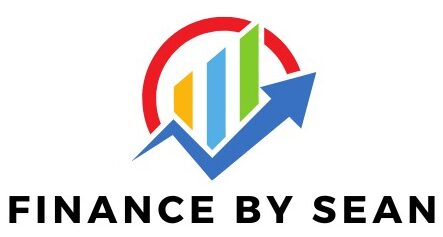Let’s be real—investing can sound intimidating. Between the financial jargon, the graphs that look like heart monitor readings, and that one guy on YouTube screaming about “buying the dip,” it’s enough to make anyone want to crawl back into their savings account and call it a day.
But here’s the truth: getting started in the stock market doesn’t require you to be a math genius or a Wall Street insider. If you’ve ever ordered tacos online or binge-watched a series with subtitles, you’ve got the patience and smarts to figure this out.
This guide breaks down everything you need to know—step-by-step and jargon-free. No pressure, no panic, and definitely no pyramid schemes.
Grab your favorite drink, kick back, and let’s get you one step closer to building that money-making portfolio.
Table of Contents
- What is the Stock Market?
- Key Investment Terms
- Understanding the Basics
- Evaluating Stocks
- Getting Started with a Brokerage Account
- Why Index Funds Are a Smart First Choice
- Luke vs. Luna: A Tale of Two Investment Styles
- Luke’s Story: The Impulsive Investor
- Luna’s Story: The Informed Investor
- The 30-Year Difference
- Visual Comparison: Luke vs. Luna
- What If They Invested More?
- Final Thoughts & Conclusion
1. What is the Stock Market?
The stock market (aka “the market”) is basically a place where businesses, fund managers, and everyday folks like you and me go to buy and sell ownership in companies. These pieces of ownership are called stocks.
When people talk about “the market,” they’re often referring to popular stock exchanges like the New York Stock Exchange (NYSE) or the Nasdaq.
2. Key Investment Terms
Stock – A piece of ownership in a business. For example, owning one share of Amazon means you own a tiny slice of that massive pie.
Mutual Fund – A company that pools money from many investors to buy a diversified set of stocks or bonds.
ETF (Exchange-Traded Fund) – Like a mutual fund but cooler. It’s a bundle of investments (like stocks or bonds) that trades like a stock. Think of it as a snack variety pack for your portfolio. Index Fund – A type of mutual fund or ETF that tracks a specific market index, like the S&P 500. Instead of picking individual stocks, you get a little piece of many. Example: Buying an S&P 500 index fund is like owning a teeny-tiny slice of the 500 biggest companies in the U.S.
3. Understanding the Basics
Before you jump in, it helps to get the lay of the land. Grab a book or two—like Stock Investing For Dummies or The Little Book of Common Sense Investing by John Bogle. These are like GPS for beginner investors.
Also, know this: the market goes up and down. That’s normal. It’s like a rollercoaster, and the people who stay buckled in usually end up ahead.
Here’s a short video from vanguard on how to open an account.
When evaluating a company’s stock, ask:
- Is the company profitable?
- Is it growing?
- Is there demand for what it does?
- Does it have a competitive edge?
- What do other investors think?
- What’s the management like?
- Does it have a strong balance sheet?
- Is the stock price fair compared to earnings?
And most importantly—do you understand what the company actually does? If you can’t explain it to your dog, maybe don’t invest just yet.
4. Evaluating Stocks
Imagine two identical t-shirts. One is $20, the other is $5. The $5 one seems like a steal… until you find out it’s faded, smells weird, and has a hole in the back.
Same goes for stocks. A “cheap” stock isn’t always a good deal. Consider the fundamentals (like profit and growth potential) before buying in.
5. Getting Started with a Brokerage Account
Ready to jump in? Open a brokerage account. It’s basically your online portal to buy, sell, and hold investments.
Some popular ones: Vanguard, Charles Schwab, Fidelity, and Robinhood. Most let you open an account in under 10 minutes.
You’ll choose between a retirement account (like a Roth IRA) or a regular brokerage account. Retirement accounts offer tax perks but limit withdrawals. A standard brokerage gives you more flexibility.
6. Why Index Funds Are a Smart First Choice
If picking stocks sounds stressful, there’s good news: index funds offer an easy, low-cost way to invest.
According to John Bogle’s The Little Book of Common Sense Investing, most people are better off putting their money into index funds. Why?
- They’re low-fee
- They’re diversified
- They don’t require stock-picking skills
- They help you stay sane when markets swing
Example: An S&P 500 index fund gives you exposure to companies like Apple, Google, Coca-Cola, and more—all in one purchase.
7. Luke vs. Luna: A Tale of Two Investment Styles
Luke’s Story: The Impulsive Investor
Luke heard from a coworker that a certain stock was “about to explode.” Hype in his eyes and FOMO in his veins, he dumped $1,000 into it and started investing $300/month after that. It’s like investing $10 a day—pretty doable, honestly.
But then… the market dipped. He panicked, sold at a 30% loss, and took a year off to “wait for the perfect time.” Spoiler: there’s no perfect time.
After that year, Luke finally got back into the game and started consistently investing $300/month just like Luna.
Luna’s Story: The Informed Investor
Luna also started with $1,000, but instead of trying to time the market, she read a book and opened a Vanguard account. She chose a simple S&P 500 index fund and started investing $300/month from day one.
She didn’t care about the noise. She stayed consistent, automated her contributions, and let time do the heavy lifting.
The 30-Year Difference
Assuming a 10% average return (before inflation):
- Luna’s investment after 30 years = ~$660,000
- Luke’s investment after 30 years (with 1-year delay and 30% loss) = ~$630,000
That’s a $30,000 difference—all because Luna stayed consistent and didn’t try to outsmart the market.
Visual Comparison: Luke vs. Luna
| Investor | Total Invested | Time in Market | Final Value (30 yrs) |
|---|---|---|---|
| Luna | $109,000 | 30 yrs | ~$660,000 |
| Luke | $109,000 | 29 yrs | ~$630,000 |
What If They Invested More?
Let’s say they bumped up their monthly contributions:
| Monthly Contribution | Luna’s Final Value | Luke’s Final Value |
| $600 | ~$1.3 million | ~$1.26 million |
| $1,200 | ~$2.65 million | ~$2.53 million |
Even small delays make a huge difference over decades.
8. Final Thoughts & Conclusion
Investing doesn’t have to be complicated. Start small. Stay consistent. Don’t try to time the market. Avoid jumping on trends just because Chad from accounting made $200 on some stock last week.
Remember, it’s not about being perfect—it’s about being in the game for the long haul.
Now, I’d love to hear from you: Which of these tips are the easiest or hardest for you to follow?
Drop a comment below and check out more personal finance tips at FinanceBySean.com!





